Photo: Gregg DeGuire/WireImage.com
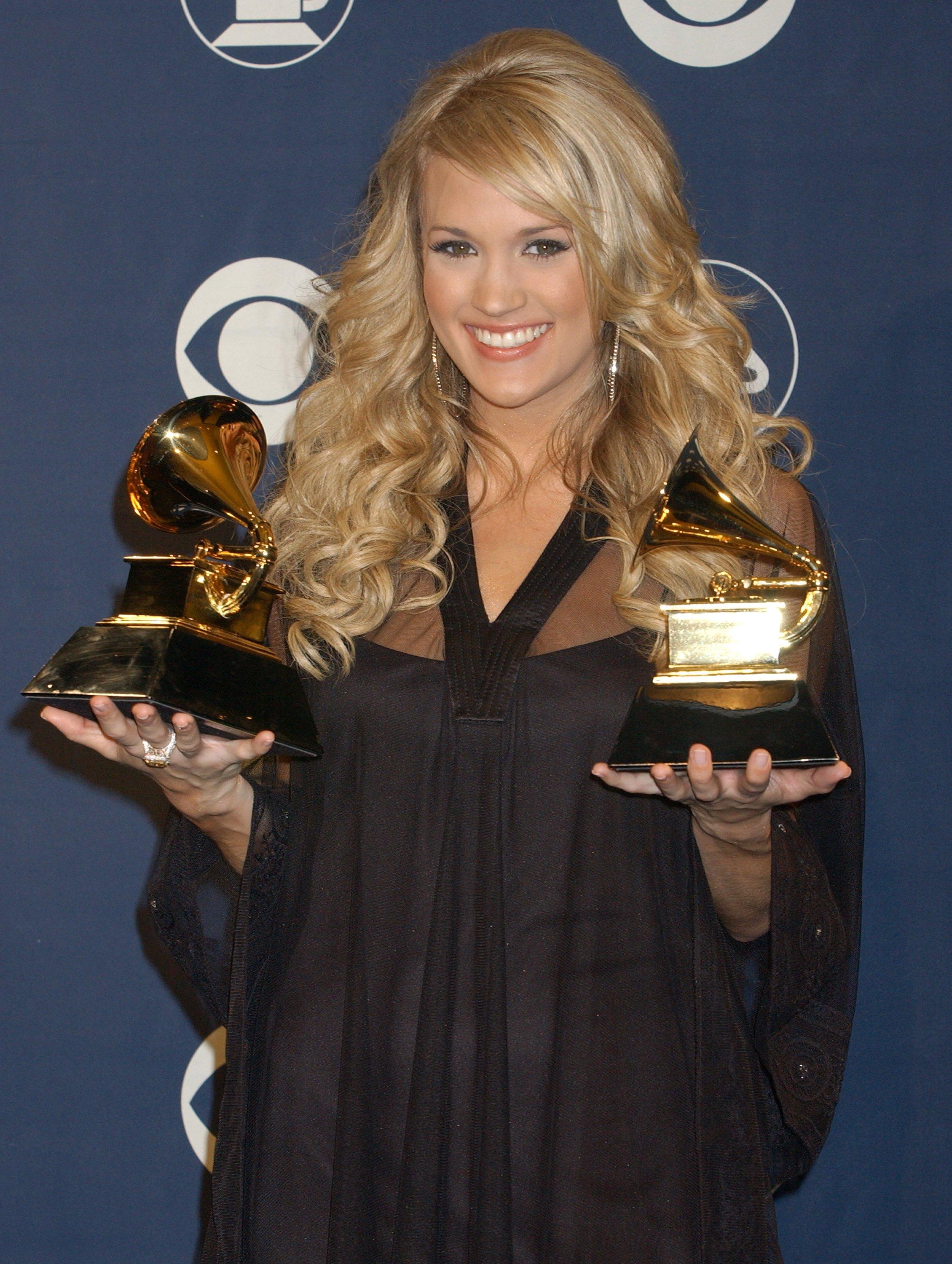
news
GRAMMY Rewind: 49th Annual GRAMMY Awards
Dixie Chicks win big and Carrie Underwood takes Best New Artist against these nominees
Music's Biggest Night, the 54th Annual GRAMMY Awards, will air live from Staples Center in Los Angeles on Sunday, Feb. 12 at 8 p.m. ET/PT on CBS.
In the weeks leading up to the telecast, we will take a stroll through some of the golden moments in GRAMMY history with the GRAMMY Rewind, highlighting the "big four" categories — Album Of The Year, Record Of The Year, Song Of The Year, and Best New Artist — from past awards shows. In the process, we'll discuss the winners and the nominees who just missed taking home the GRAMMY, while also shining a light on the artists' careers and the eras in which the recordings were born.
Join us as we take an abbreviated journey through the trajectory of pop music from the 1st Annual GRAMMY Awards in 1959 to this year's 53rd telecast. Today, the GRAMMY Awards remember the year the Dixie Chicks were flying high.
49th Annual GRAMMY Awards
Feb. 11, 2007
Album Of The Year
Winner: Dixie Chicks, Taking The Long Way
Gnarls Barkley, St. Elsewhere
John Mayer, Continuum
Red Hot Chili Peppers, Stadium Arcadium
Justin Timberlake, FutureSex/LoveSounds
This Album Of The Year win was just the tip of a huge year for the Dixie Chicks, all of which was welcome vindication for the group after a politically charged comment made by singer Natalie Maines at a concert in 2003 had cost the group some fan and radio support. GRAMMY voters rose above the controversy to reward the album's merits. The group would win four GRAMMYs this year, and have won 12 to date. Gnarls Barkley (producer Danger Mouse and singer Cee Lo Green) teamed for a galvanizing album that drew from pop as much as the collaborators' roots in hip-hop. Mayer's Continuum won the Best Pop Vocal Album trophy, and marked his conscious awareness of the social issues of his generation, evidenced by his GRAMMY-winning "Waiting On The World To Change." The Red Hot Chili Peppers earned a nomination with the sprawling Stadium Arcadium, a 28-song double album released in a CD/digital-download age in which double albums rarely exist. Timberlake, the former 'N Sync star, rounded out the nominees with a modern-day, blue-eyed soul record, which ambitiously reached the top of the Billboard 200 in 2006.
Record Of The Year
Winner: Dixie Chicks, "Not Ready To Make Nice"
Mary J. Blige, "Be Without You"
James Blunt, "You're Beautiful"
Gnarls Barkley, "Crazy"
Corinne Bailey Rae, "Put Your Records On"
The Dixie Chicks took Record Of The Year on the strength of "Not Ready To Make Nice," a fiercely defiant song that contained lines that spoke volumes about their trials, including death threats: "How in the world can the words that I said/Send somebody so over the edge/That they'd write me a letter/Sayin' that I better shut up and sing or my life will be over." "Be Without You" was equally heartfelt, with Blige pouring her soul into every word in her typical no-holds-barred approach, withholding no emotion. "You're Beautiful" was the ballad of the year, a soft ode to the perfection of a woman from the past, just out of the singer's reach. Gnarls Barkley's "Crazy" captivated listeners with its combination of retro-soul, inescapable hooks and cutting-edge production. Brit newcomer Rae brought a jazzy feel to the neo-soul of "Put Your Records On," though she started out inspired by all-female punk groups such as L7.
node: video: Dixie Chicks Win Record Of The Year
Song Of The Year
Winner: Dixie Chicks, "Not Ready To Make Nice"
Mary J. Blige, "Be Without You"
James Blunt, "You're Beautiful"
Corinne Bailey Rae, "Put Your Records On"
Carrie Underwood, "Jesus, Take The Wheel"
The Dixie Chicks completed their sweep of the "big four" categories for which they're eligible with a Song Of The Year win for "Not Ready To Make Nice," which the group wrote with Dan Wilson, whose band Semisonic scored a Best Rock Song GRAMMY nomination for "Closing Time" in 1998. Blige co-wrote "Be Without You" with hot R&B writers Johnta Austin, Bryan-Michael Cox and Jason Perry. Blunt wrote "You're Beautiful" with Amanda Ghost and Sacha Skarbek. Ghost, former president of Epic Records, also received a nomination for her production work on Beyoncé's GRAMMY-nominated Album Of The Year, I Am…Sasha Fierce, at the 52nd Annual GRAMMY Awards. Rae teamed with John Beck and Steve Chrisanthou for "Put Your Records On." Beck's credits include Tasmin Archer's "Sleeping Satellite," a Top 40 hit in 1993. Finally, Underwood scored a No. 1 Country Singles hit with "Jesus, Take The Wheel," a tune written by country songwriting stalwarts Brett James, Hillary Lindsey and Gordie Sampson. The track also picked up Best Country Song and Best Female Country Vocal Performance honors.
node: video: "Not Ready To Make Nice" Wins Song Of The Year
Best New Artist
Winner: Carrie Underwood
James Blunt
Chris Brown
Imogen Heap
Corinne Bailey Rae
Underwood became the first, and so far only, "American Idol" alumnus to win the Best New Artist award. It was a solid choice, as the singer has gone on to win five GRAMMY Awards in her still growing career. Blunt's five nominations this year didn't result in any wins, but were a testament to the impact this newcomer made. Brown has earned four more nominations since his Best New Artist nod as he continues to develop an impressive career. Heap may not have won here, but she became the first female to win the Best Engineered Album, Non-Classical, GRAMMY in 2009 for Ellipse. Rae also missed the cut, but would win the next year in the Album Of The Year category as part of the ensemble cast assembled by Herbie Hancock for his River: The Joni Letters album.
node: video: Carrie Underwood Wins Best New Artist
Come back to GRAMMY.com tomorrow as we revisit the milestone 50th Annual GRAMMY Awards. Tune in to the 53rd Annual GRAMMY Awards live from Staples Center in Los Angeles on Sunday, Feb. 13 at 8 p.m. ET/PT on CBS.
Follow GRAMMY.com for our inside look at GRAMMY news, blogs, photos, videos, and of course nominees. Stay up to the minute with GRAMMY Live. Check out the GRAMMY legacy with GRAMMY Rewind. Keep track of this year's GRAMMY Week events, and explore this year's GRAMMY Fields. Or check out the collaborations at Re:Generation, presented by Hyundai Veloster. And join the conversation at Facebook, Twitter, and YouTube.
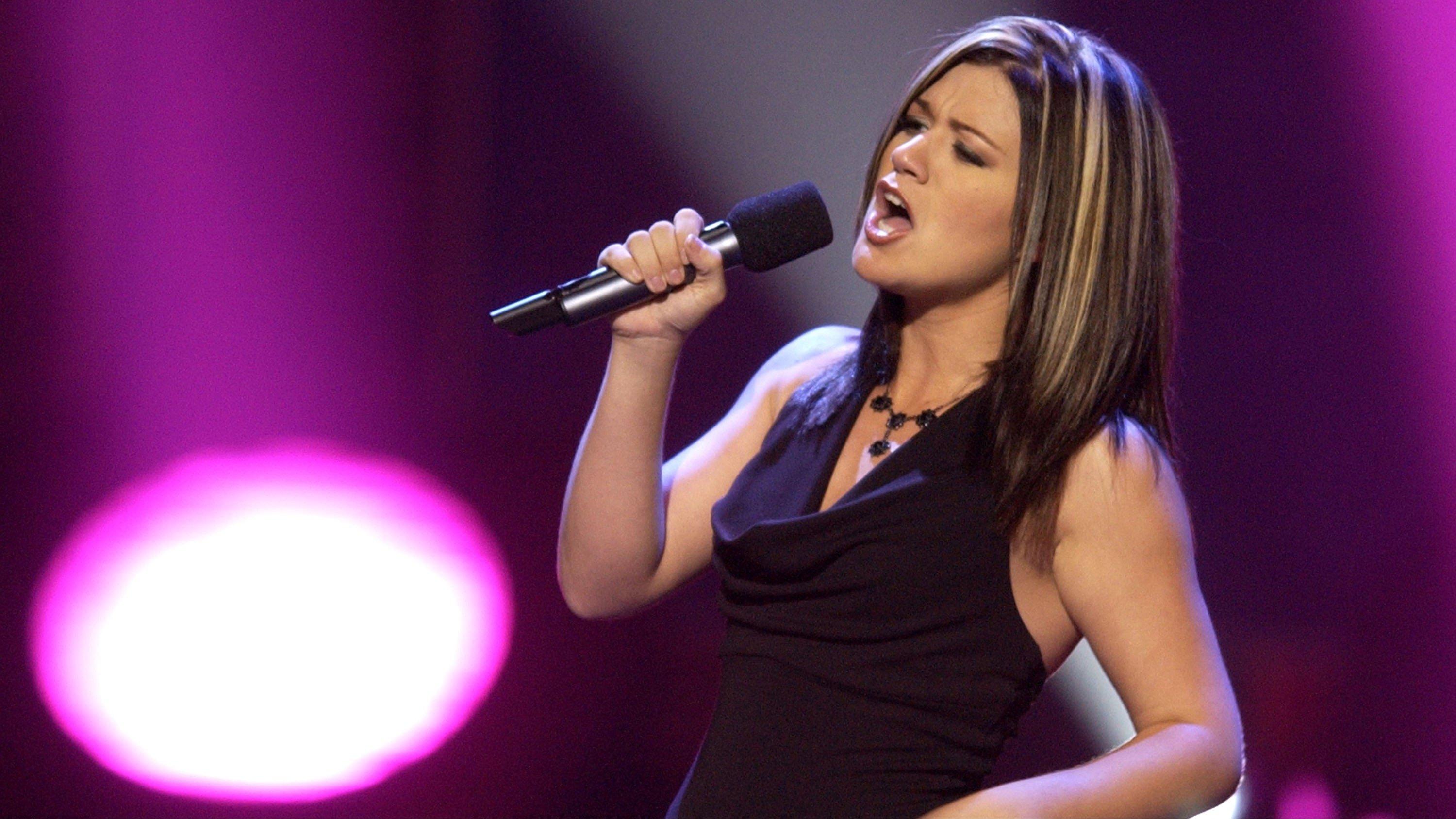
Photo: Steve Granitz / GettyImages
news
On This Day In Music: "American Idol" Premieres On Fox Network
For decades, "American Idol" has been instrumental in discovering some of music’s biggest names and pioneering the reality TV contest genre. As the show enters its 22nd run, here’s a look at how it has become an iconic household staple across the country.
For countless Americans, "American Idol" is intertwined with core memories as a show that had families eagerly glued to their TVs twice a week. It brought generations together, creating moments of both suspense and excitement that are still remembered today, as the show continues to run in its 22nd season.
Created by visionary entrepreneur Simon Fuller, "American Idol" premiered on June 11, 2002, as a fresh spin-off of the British program "Pop Idol." It revolutionized how Americans engaged with reality TV through its interactive, viewer-driven voting system, which encouraged audience participation in the success of their favorite contestants. The show also offered viewers a glimpse into contestants' candid backstories and personal journeys, anchoring emotional investment and skyrocketing the show's popularity.
The show's debut season featured a dynamic trio of judges: singer Paula Abdul, TV personality Simon Cowell, and producer Randy Jackson. Their contrasting personalities brewed a chemistry as captivating as the hopeful performances. Abdul’s warmth, Cowell's blunt wit, and Jackson’s humor added extra layers of entertainment, making the twice a week broadcasts a must-watch.
The first season of "American Idol" also unforgettably introduced the country to Kelly Clarkson. Since her debut — with a heart-tugging backstory about being the average girl-next-door with big dreams — Clarkson has gone on to tour the world, host her own TV talk show, and secured her spot as one of music’s most beloved talents.
"I had dreams since I was a little girl that I wanted to be on the GRAMMYs, or some award show and sing on there," Clarkson mentioned in her pre-audition interview. Flash forward 22 years, the pop singer has accumulated 17 GRAMMY nominations and three wins, propelled by a powerful vocal gift.
Other artists who launched their careers from the show's platform include Jordin Sparks, Carrie Underwood, Adam Lambert, and Jennifer Hudson, who each serve as testament to the show’s impact in music.
"American Idol" has not only opened our eyes to some of our favorite musicians, but it also has given us some of our favorite pop culture moments.
A video that frequently resurfaces on social media captures a memorable moment between Katy Perry and contestant Noah Davis, where they bond over the slang term 'wig'.
"No, it’s not your language. It’s just for us," Perry joked to her fellow judges, Lionel Richie and Luke Bryan, when they questioned the term’s meaning.
After two decades on air, "American Idol" has etched a lasting legacy in pop culture. It has paved the way for other reality TV music shows and created lasting memories for music fans along the way.
“The show transcends age, gender, ethnicity, everything,” Underwood told Billboard in 2005.
Explore More History-Making Moments In Music

On This Day In Music: Spice Girls Release "Wannabe," Their Iconic Debut Single

On This Day In Music: Michael Jackson Passes Away In Los Angeles At Age 50
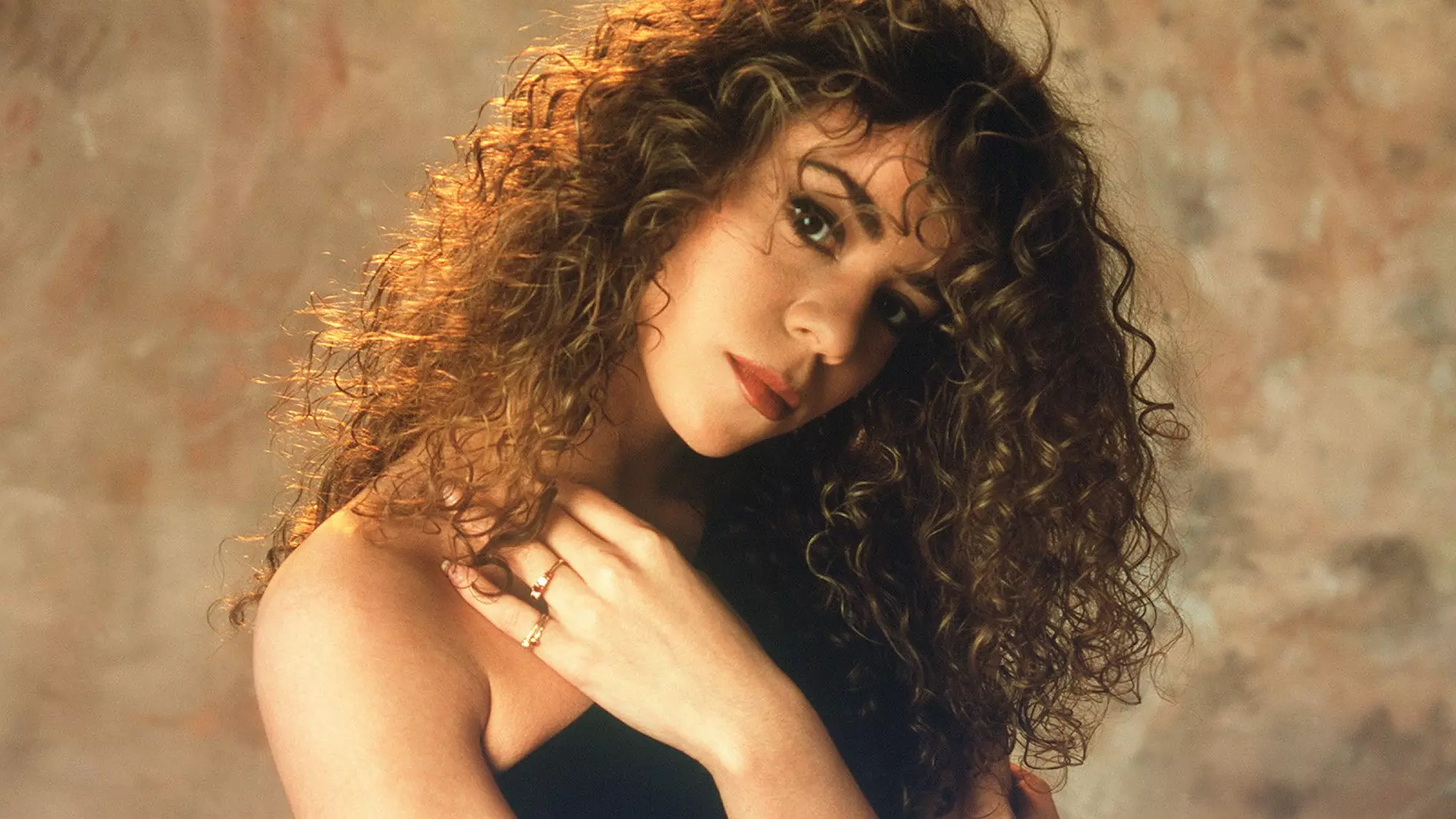
On This Day In Music: Mariah Carey Releases Her Self-Titled Debut Album
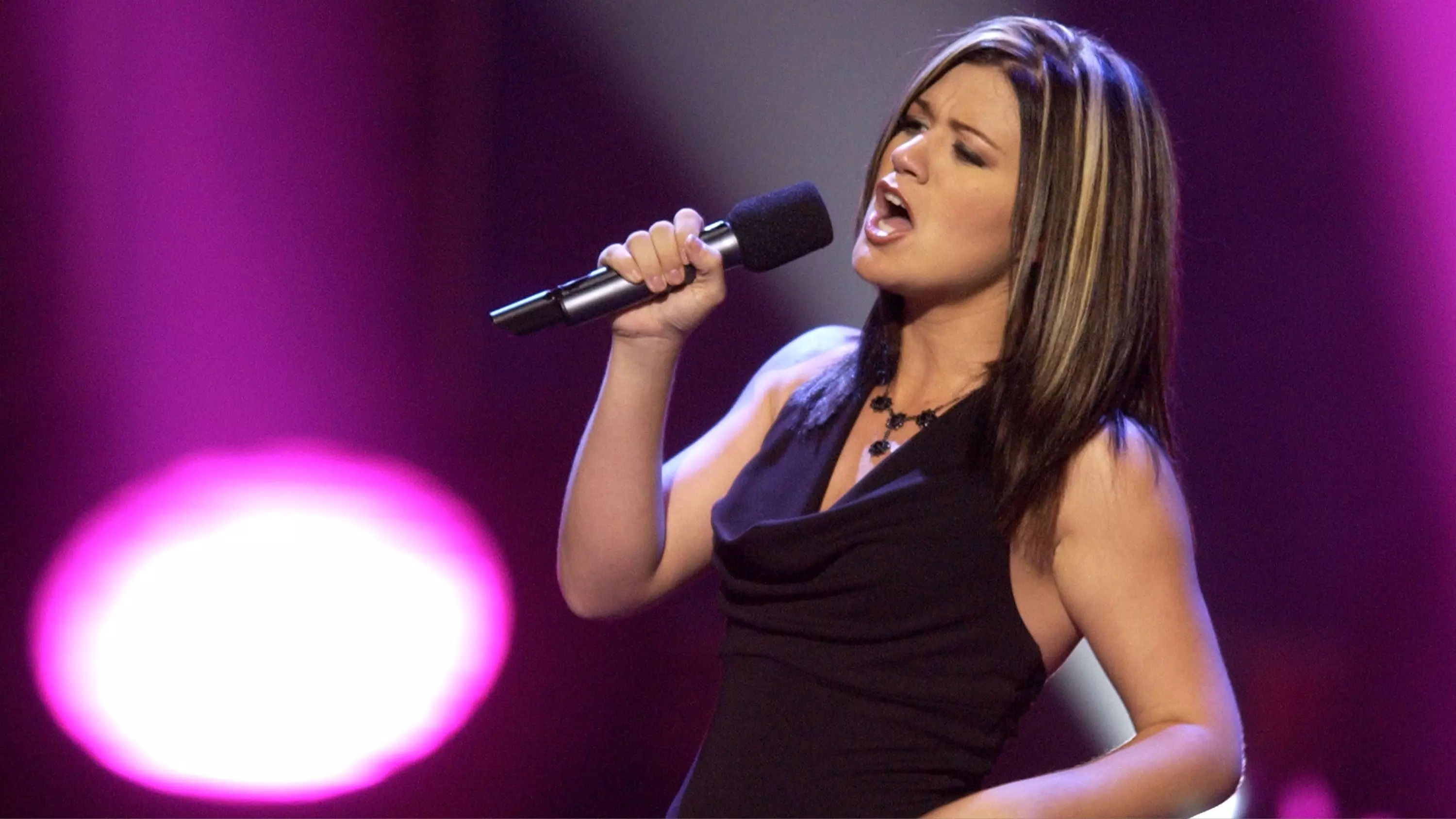
On This Day In Music: "American Idol" Premieres On Fox Network
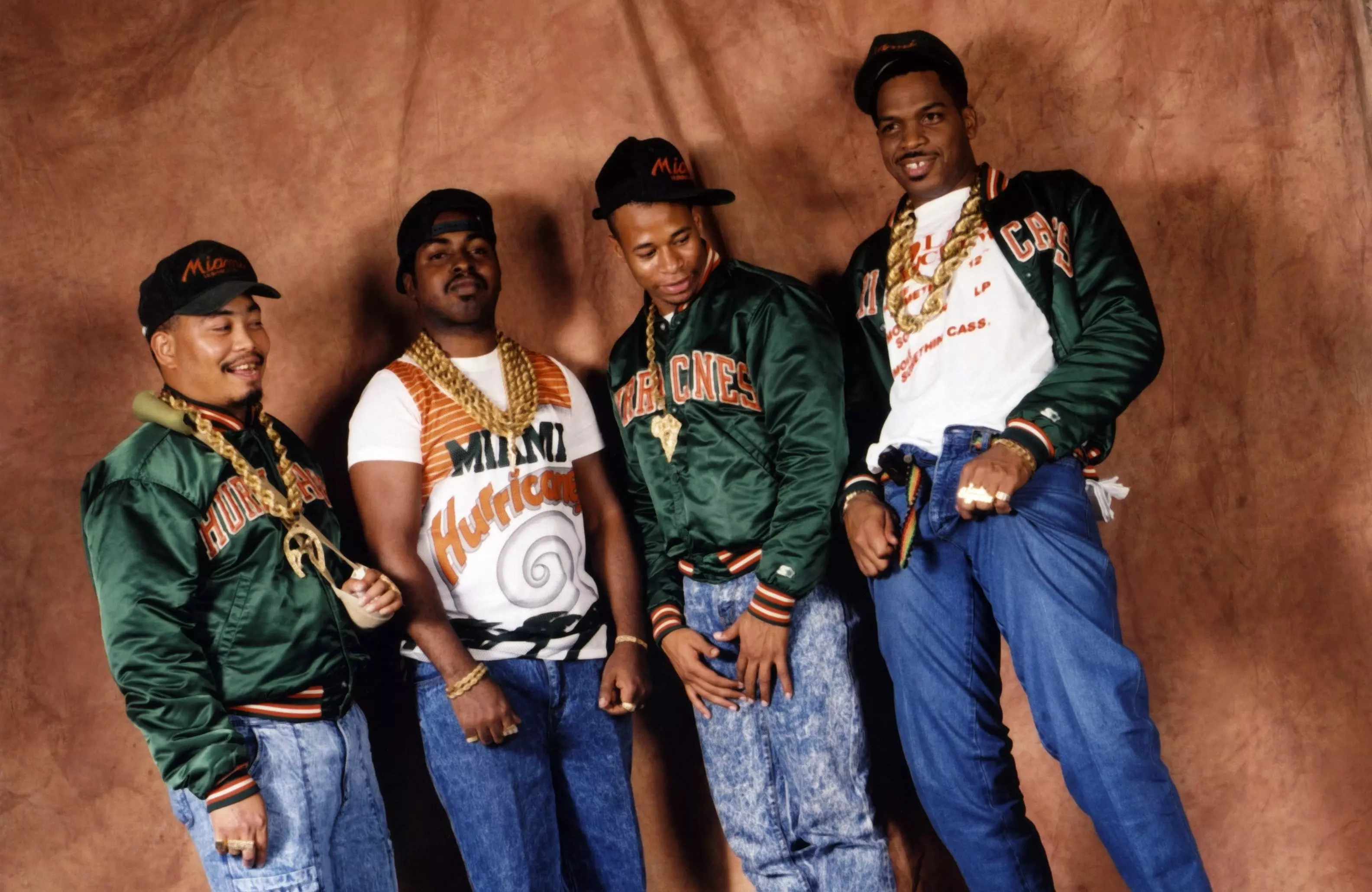
On This Day In Music: 2 Live Crew's 'As Nasty As They Wanna Be' Becomes First Album Declared Legally Obscene, Anticipates First Amendment Cases
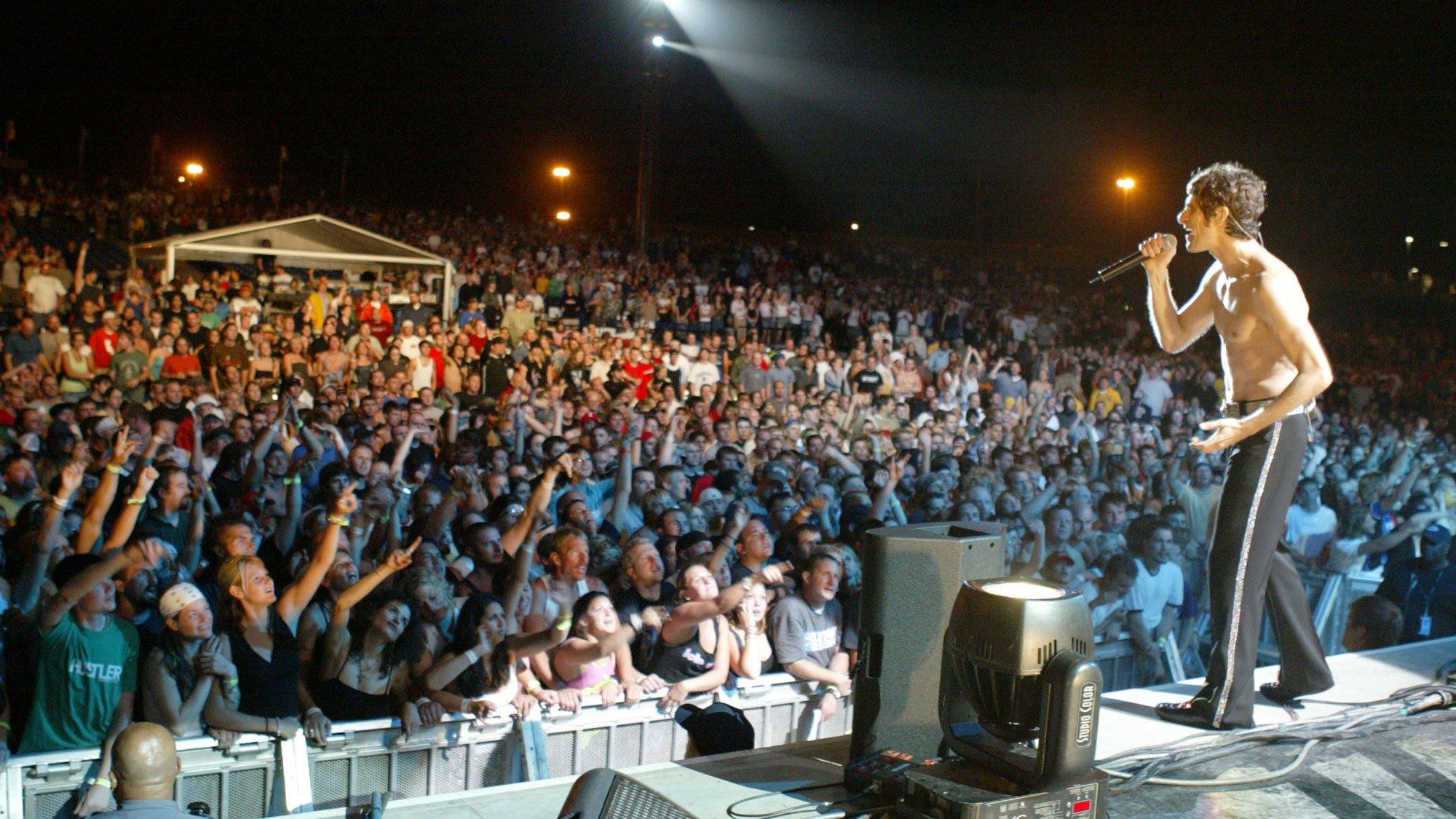
Photo: J. Shearer/WireImage/GettyImages
list
'Lolla: The Story of Lollapalooza' Recounts How An Alt Rock Fest Laid The Blueprint For Bonnaroo & More
A new three-part documentary on Paramount+ traces the origin of Lollapalooza from its early days as a traveling alt-rock showcase initially conceived as a farewell tour for Jane's Addiction, to the three-day Chicago-based festival that exists today.
Few music festivals have had the cultural impact of Lollapalooza.
Conceived in 1991 as a farewell tour for Jane's Addiction by lead singer Perry Farrell, the festival quickly became a traveling showcase for alt-rock and counterculture. Its eclectic lineups, which also included punk, metal, and hip-hop acts, helped define a generation's musical tastes.
A new, three-episode documentary, "Lolla: The Story of Lollapalooza," takes an in-depth look at the festival's journey over three decades. From its early days of bringing together alt acts including Nine Inch Nails, Living Colour, Pearl Jam, and the Beastie Boys, Lollapalooza has evolved into what it is today: a three-day festival based in Chicago's Grant Park since 2005. The festival remains an enduring celebration of alternative music.
"Lolla" explores how Lollapalooza defied expectations by both embracing and helping shape the emerging youth culture of the '90s — a rebellious, introspective shift from the flashy excess of the '80s. The docuseries highlights the festival's influence through a trove of archival footage and exclusive interviews with Lollapalooza co-founders, show promoters, bookers, MTV hosts. Of course, "Lolla" features a who's who of '90s-era rockers — including Farrell himself, Flea from Red Hot Chili Peppers, Tom Morello of Rage Against The Machine, Trent Reznor from Nine Inch Nails, Donita Sparks from L7, Ice-T.
To watch "Lolla" is to open a time capsule for alternative culture, one where the stage becomes a symbol of generational change. Read on for five takeaways from the documentary, which is now streaming on Paramount+.
The Reading Festival Served As Inspiration
For their farewell tour, Jane's Addiction decided to emulate the UK Reading Festival's approach to curating live music and alternative acts in a multi-day, open-air forum (where bands like the Buzzcocks and Pixies played to crowds of 40,000).
Jane's Addiction had been scheduled to play the 1990 Reading Festival, but Farrell partied too much the night before after a club gig and lost his voice, and the band had to cancel. Drummer Stephen Perkins and future Lollapalooza co-founder Marc Geiger decided to check out the event anyway, which planted the seed for the future tour.
"Reading was a cornucopia of artists, and scenes, and curation, and it was such a vibe," recalled Geiger in an interview scene from the doc. "I remember saying, 'Perry, we have to do it.'"
Farrell was game after missing his chance to see Reading first-hand. So Lollapalooza co-founders Geiger, Don Muller and Ted Gardner, who was also Jane's Addiction band manager, got to work emulating the Reading model. In addition to live music, Farrell wanted something "completely subversive" with booths to engage festival goers with everything from henna tattoos and art galleries, to nonprofit and political organizations like Greenpeace, PETA, the Surfrider Foundation, and even voter registration for the Rock The Vote campaign. The result was art and activism combined with commerce.
Lolla Was Born From The Death Of Jane's Addiction
Although Jane's Addiction had a big buzz with their third album, Ritual de lo Habitual, the band was on the edge of dissolution. "We really couldn't stand each other," admitted Farrell. Ready for his next act, Farrell saw the opportunity to end on a high note with Jane's Addiction. "The best work we did, we left on the stage at Lolla," he said in the doc.
In the early '90s, alternative acts were not selling out massive venues. Organizers were on edge, hoping fans would buy tickets and show up to not one, but 28 U.S. tour dates featuring the seven-act lineup for the first-ever Lollapalooza.
What nobody expected was the watershed success. The first show saw fans sweat it out to see their favorite acts in Phoenix, on a day with temperatures well over 100 degrees. Nine Inch Nails' equipment melted in the heat, leading the band to destroy their failing gear before walking off the stage.
Despite initial hiccups, the tour wasn't hindered. Lollapalooza's first year sold out in a majority of venues holding 15-18,000 people, driven largely by word-of-mouth and favorable coverage by MTV.
"I think everybody knew and ultimately felt, 'wow, I'm sort of lucky to be here — I'm part of something,'" recalled Geiger in the doc. "It was bigger than anything these artists or fans had seen at that time."
Lollapalooza '92 further mixed genres on the main stage — like gangsta rap (Ice Cube), grunge (Pearl Jam) and shoegaze (Lush) — while greatly expanding the line-up on a side stage upon which Farrell and Perkins introduced their new band Porno For Pyros, alongside many other acts. Lollapalooza's model was born.
Early Years Embraced Racial Inclusivity, But Lagged Gender-Wise
Right from the start, Lollapalooza organizers mixed up the bill beyond white artists that traditionally headlined rock concerts long before and after Jimi Hendrix performed at Woodstock and Monterey Pop. Part of why Lollapalooza thrived is the inclusion of bands like Ice-T's Body Count, Fishbone, and Living Colour — favorite headliners during the early tours.
Rage Against The Machine guitarist Tom Morello credited Living Colour with helping build "the alternative arc" and opening doors for Rage. "Without Living Colour, Rage Against The Machine doesn't get a record deal. Ever," Morello said.
A big moment came near the end of the '91 tour when Ice-T and Farrell squared off to cover Sly and the Family Stone's "Don't Call Me ******, Whitey" in which they tersely trade verses, then end up tangoing across the stage. It was a provocative performance that grabbed headlines and the audience's attention months after the high profile police beating of Rodney King in Los Angeles. In '92, Soundgarden showed solidarity with Body Count by performing their controversial track "Cop Killer" with their guitarist Ernie C onstage in Miami.
While Lolla embraced racial diversity, the early line-ups were male-dominated. Lone female act Siouxsie and the Banshees were a favorite in '91 and later Lollapalooza main stage artists, like Sonic Youth, Babes In Toyland, Lush, and the Breeders — which had more if not all female members — were outnumbered by their male counterparts.
Read more: 6 Female-Fronted Acts Reviving Rock: Wet Leg, Larkin Poe, Gretel Hänlyn & More
Donita Sparks noted that L7 got booked in '94 only after they fired off a bluntly worded fax to the organizers. "We got the offer," Sparks said, "but we had to push the issue. And we had to fight for it. 'Cause that's how much we wanted to be on Lollapalooza, and more importantly, that's how much we felt we deserved to be on Lollapalooza.
Female artists would eventually receive their Lolla dues, with Billie Eilish, Lorde, HAIM, Miley Cyrus and Karol G performing as festival headliners, and artists like Lady Gaga starting out as side stage artists before exploding in popularity and returning to headline the fest a few short years later.
It Became A Victim Of Its Own Success
Lollapalooza from years '91 to '93 were the purest in terms of alt-rock acts, but as the event drew a wider range of talent and demand, it began to suffer a bit of an identity crisis. After all, it's hard to be a beacon for the underground scene once that culture is above ground.
By Lolla '94, attendance set records and alt-rock had hit the mainstream while grunge peaked and critics bemoaned its growing conventional status. Former second stage booker John Rubeli revealed that Nirvana turned down a $6 million offer to headline the '94 tour because of frontman Kurt Cobain's fear of selling out. Cobain's suicide a few short weeks later changed the scene.
In '95, the festival returned with more indie bands on the mainstage, but some were eclipsed by bigger artists like Coolio, who drew a bigger crowd to the parking lot side stage. Increased popularity drove commercial sponsorship, and the event became more expensive. Ticket sales dropped. Then in '96, Farrell quit his involvement with the festival for a year in protest over the booking of Metallica, whose aggressive music and audience he felt were out of step with his vision.
"I felt disrespected," Farrell said. "I'm not putting this thing together to make the most money. I'm putting this thing together to make the most joy."
Upon his return in 1997, Farrell's inclusion of electronic acts like the Orbital and the Prodigy were, to some ears, ahead of the curve. The festival then went on a six-year hiatus.
Lollapalooza returned on shaky legs for its 2003 tour, which included Audioslave, Incubus, the Donnas, and the reunion of Jane's Addiction. But it was truly reborn in 2005 as a three-day event in Chicago through concert promoters C3 Presents (who co-executive produced the "Lolla" doc). Admittedly, some of the 21st century headliners like Lady Gaga, Miley Cyrus, Journey, and Paul McCartney would never have fit the '90s festival bill.
Times have changed and, today, the festival has embraced its conventional success while retaining its original genre-spanning reach with the Killers, Melanie Martinez, Skrillex, and Tyler, the Creator included on this summer's lineup.
Lolla Was A Model For Coachella, Bonnaroo, And Beyond
Prior to the arrival of Lollapalooza, rock festivals were usually single weekend events that took place in a fixed location, like Woodstock in '69, Steve Wozniak's US Festival in '82 and '83, and European festivals like Reading. "I just think it's the first American, truly eclectic concert series since Woodstock," said Ice-T. "And even Woodstock wasn't as eclectic because Woodstock was pretty much all rock."
Lollapalooza's successful tour format inspired other popular tours and live events, especially in the mid-'90s. During the festival's break during the late '90s and early 00's, niche festivals like Ozzfest, Vans Warped Tour, and Lilith Fair stole the show. These festivals not only continued Lollapalooza's legacy by bringing diverse genres to cities across the country, but transformed the live music scene into a cultural phenomenon.
While epic, genre-spanning weekend festivals like Coachella and Bonnaroo have been raging since the early aughts, Lollapalooza first proved that a seemingly radical idea could grow and thrive. Incorporating a mix of rock, hip-hop, electronic, and alternative acts, inclusivity and mobility became a festival blueprint. Today, Lollapalooza is tapping into international audiences and local music scenes with versions of the festival in Argentina, Berlin, Stockholm, Paris, and even Mumbai.
Lollapalooza's success proves that the media and music industry often don't realize the size and passion of certain scenes and subcultures until they're brought together in the right setting. By uniting diverse musical acts and their fans, Lollapalooza highlights eclectic talent but also shows just how much people crave that representation and diversity.
Music Festivals 2024 Guide: Lineups & Dates For Lollapalooza, Coachella, Bonnaroo & Much More

Photo: Timothy Norris/Getty Images
list
10 John Mayer Songs That Show His Versatility, From 'Room For Squares' To Dead & Co
As John Mayer launches his latest venture with Dead & Company — a residency at the Sphere in Las Vegas — revisit 10 songs that show every side of his musical genius.
At the 2003 GRAMMYs, a 25-year-old John Mayer stood on stage at Madison Square Garden, his first golden gramophone in hand. "I just want to say this is very, very fast, and I promise to catch up," he said with a touch of incredulity.
In the two decades that have followed his first GRAMMY triumph, it's safe to say that Mayer, now 46, has caught up. Not only has the freewheeling guitarist and singer/songwriter won six more GRAMMYs — he has also demonstrated his versatility across eight studio albums and countless cross-genre collaborations, including his acclaimed role in The Grateful Dead offshoot, Dead & Company. But the true testaments to his artistic range lie simply within the music.
Over the years, Mayer's dynamism has led him to work deftly and convincingly within a wide variety of genres, from jazz to pop to Americana. The result: an elastic and well-rounded repertoire that elevates 2003's "Bigger Than My Body" from hit single to self-fulfilling prophecy.
From March 2023 to March 2024, Mayer took his protean catalog on the road for his Solo Tour, which saw him play sold-out arenas around the world, mostly acoustic, completely alone. The international effort harkened back to Mayer's early career days, when standing alone on stage, guitar in hand, was the rule rather than the exception. Just after his second Solo leg last November, Mayer added radio programming and curation to his resume via the launch of his Sirius XM channel, Life with John Mayer. Fittingly, XM bills the channel (No. 14) as one notably "defined not by genre, but by the time of day, as well as the day of the week."
Mayer's next venture sees him linking back up with Dead & Company, for a 24-show residency at the Sphere in Las Vegas from May 16 to July 13. In honor of his latest move, GRAMMY.com explores the scope of Mayer's musical genius by revisiting 10 essential songs that demonstrate the breadth of his range, from the very beginning of his discography.
"Your Body Is A Wonderland," Room For Squares (2001)
The second single from Mayer's debut album, "Your Body Is A Wonderland" became an almost instant radio favorite like its predecessor, "No Such Thing," earning Mayer his second consecutive No. 1 on Billboard's Adult Alternative Airplay chart. The song's hooky pop structure provided an affable introduction to Mayer's lyrical skill by way of smart, suggestive simile and metaphor ("One mile to every inch of/ Your skin like porcelain/ One pair of candy lips and/ Your bubblegum tongue") ahead of Room For Squares' release later that June. The breathy hit netted Mayer his first career GRAMMY Award, for Best Male Pop Vocal Performance, at the 45th Annual GRAMMY Awards in 2003.
In recent years, Mayer — who penned the song when he was 21 — has chronicled his tenuous relationship with "Your Body is a Wonderland" in his infamous mid-concert banter, playfully critiquing the song's lack of "nuance." Following a perspective shift, Mayer has come to embrace his self-proclaimed "time capsule"; it was a staple of his set lists for his Solo Tour.
"Who Did You Think I Was," TRY! - Live in Concert (2005)
The product of pure synergy and serendipity, the John Mayer Trio assembled after what was intended to be a one-time stint on the NBC telethon, "Tsunami Aid: A Concert of Hope," in 2005. The benefit appearance lit the creative fuse between Mayer, bassist Pino Palladino and drummer Steve Jordan — who, over the years, have also played alongside the singer on his headline tours.
The John Mayer Trio propelled its eponymous artist from pop territory to a bluesy brand of rock 'n' roll that then demonstrated his talent as a live guitarist to its greatest degree yet. The Trio's first and only release, TRY! - Live in Concert, was recorded at their September 22, 2005 concert at the House of Blues in Chicago.
Mayer acknowledges his abrupt sonic gear shift on TRY! opener, "Who Did You Think I Was." "Got a brand new blues that I can't explain," he quips, then later asks, "Am I the one who plays the quiet songs/ Or is he the one who turns the ladies on?"
"Gravity," Continuum (2006)
Though "Waiting On the World to Change" was the biggest commercial hit from 2006's Continuum, "Gravity" remains the pièce de résistance of Mayer's magnum opus. Its status as such is routinely reaffirmed by the crowds at Mayer's concerts, whose calls for a live performance of his quintessential soul ballad can compete even with Mayer's mid-show remarks.
The blues-tinged slow burn marries Mayer's inimitable vocal tone with his guitar muscle on a record that strides far beyond the pop and soft rock of his preceding studio albums. Though Continuum builds on the blues direction Mayer ignited with TRY!, it does so with greater depth and technique, translating to a concept album, sonically, that evinces both his breakaway from the genres that launched his career and his skill as a blues guitarist — and "Gravity" is a prime example.
"I'm very proud of the song," Mayer mused on his Sirius XM station. "It's one of those ones that's gonna go with me through the rest of my life, and I'm happy it's in the sidecar going along with me."
"Daughters," Where the Light Is: John Mayer Live in Los Angeles (2008)
"Daughters" wasn't Mayer's first choice of a single for his sophomore LP, 2003's Heavier Things, but at Columbia Records' behest — "We really want it to go, we think it can be a hit," Mayer recalled of their thoughts — the soft-rock-meets-acoustic effort joined the album rollout. Columbia's suspicions were correct; "Daughters" topped Billboard's Adult Pop Airplay in 2004 — his only No. 1 entry on the chart to date.
But "Daughters" didn't just enjoy heavy radio rotation — it also secured Mayer his first and only GRAMMY win in a General Field Category. The Heavier Things descendant took the title of Song Of The Year at the 47th Annual GRAMMY Awards in 2005, helping Mayer evade music's dreaded "sophomore slump."
While the studio version may be the GRAMMY-winning chart-topper, Mayer's live rendition of "Daughters" during his December 8, 2007 performance at Los Angeles' Nokia Theater for Where the Light Is: John Mayer Live in Los Angeles compellingly demonstrated the power of the song — and his acoustic chops.
"Edge of Desire," Battle Studies (2009)
Come 2009, what critics almost unanimously proclaimed to be Mayer's biggest musical success had become his Achilles heel; everyone wanted another Continuum. But as they were to learn, Mayer never repeats himself. Thus came Battle Studies.
Born from a dismantling and transformative breakup, his fourth studio album arguably only becomes fully accessible to listeners after this rite of passage. Mired in introspection and pop rock, Battle Studies broadly engages with elements of pop with a sophistication that distinguishes it from Mayer's earlier traverses in pop and pop-inflected terrain.
His artistry hits a new apex on "Edge of Desire," a visceral and tightly woven song that remains one of the strongest examples of his mastery of prosody — the agreement between music and lyrics that results in a resonant and memorable listening experience.
"Born and Raised," Born & Raised (2012)
On the title track of his fifth studio album, Mayer distills growing up (and growing older) into a plaintive reflection on the involuntary, inevitable, and, in the moment, imperceptible phenomenon. He grapples with this vertigo of the soul on a record that, 12 years later, remains among his most barefaced lyrically.
The tinny texture of a harmonica, heard first in the intro, permeates the song, serving as its single most overt indicator of the larger stylistic shift that Born & Raised embodies. The 12-song set embraces elements of Americana, country and folk amid simpler-than-usual chord progressions for Mayer, whose restraint elevates the affective power of the album's lyricism.
"Born and Raised - Reprise," with which Born & Raised draws to a close, is evidence of Mayer's well-demonstrated dexterity. In its sanguine, folk spirit, the album finale juxtaposes "Born and Raised" both musically and lyrically. "It's nice to say, 'Now I'm born and raised,'" Mayer sings as the last grains of sand in Born & Raised's hourglass fall.
"Wildfire," Paradise Valley (2014)
Even before Paradise Valley hit shelves and digital streaming platforms, the cowboy hat that Mayer dons in the album artwork intimated that the hybrid of Americana, country, and folk he embraced on Born & Raised wasn't going anywhere — at least not for another album. The sunbaked project was a gutsy sidestep even further away from his successful commercial formula, and finds him expanding his stylistic fingerprint across 11 tracks that run the gamut of American roots music.
"Wildfire," the breezy toe-tapper with which Paradise Valley opens, grooves with Jerry Garcia influence. It is therefore unsurprising that many interpret "We can dance with dead/ You can rest your head on my shoulder/ If you want to get older with me," to be a lyrical nod to the Dead. Perhaps uncoincidentally, Mayer's invitation to become a member of Dead & Company came one year after the release of Paradise Valley.
"Shakedown Street," Live at Madison Square Garden (2017)
There is perhaps no better example of Mayer's dynamism than his integration in Dead & Company. The Grateful Dead offshoot, formed in 2015, intersperses Mayer among three surviving members of the band — Bob Weir, Mickey Hart, and Bill Kreutzmann — as well as two more newcomers, Oteil Burbridge and Jeff Chimenti. Mayer's off-the-cuff guitar solos and vocal support at Dead & Co's concerts are the keys that have unlocked a new plane of musicianship for Mayer, the solo artist.
This is evident on "Shakedown Street," a staple of The Grateful Dead's – and now, Dead & Company's – set lists. The languid, relaxed number gives Mayer the space to improvise guitar solos and use his vocals in a looser style than how he sings his own productions, all while feeding off the energy of his fellow band members. In addition to being one of The Dead's best-known songs, "Shakedown Street" is also the name of the makeshift bazaar where "Deadheads" socialize and sell wares ranging from grilled cheeses to drink coasters emblazoned with The Grateful Dead logo outside Dead & Company concerts.
Mayer's long, strange trip with (and within) the jam band has cross-pollinated his and The Grateful Dead's respective fandoms, attracting scores of Dead & Co listeners to his own headline shows, and vice versa. The takeaway: Mayer's involvement with Dead & Company offers a new, comparatively more rugged and improvisational lens through which to view his artistry.
"You're Gonna Live Forever in Me," The Search for Everything (2017)
"You're Gonna Live Forever in Me" evokes the sense of walking in, unexpected and undetected, to one of Mayer's writing sessions, watching him sing the freshly-penned piano ballad. This is owed to the song's abstract lyricism, the sentiment of which is deeply personal and universally accessible — a juxtaposition that's not often easy to achieve in songwriting. (Take, for example, "A great big bang and dinosaurs/ Fiery raining meteors/ It all ends unfortunately/ But you're gonna live forever in me.") But the studio version of "You're Gonna Live Forever in Me" also happens to be the original vocal take, adding to the feeling that Mayer is fully engrossed in a moment of poignant reflection mediated by music.
"I sat at the piano for hours teaching myself how the song might go. I sang it that night, and that was it…I couldn't sing the vocals again if I tried," Mayer recalled in a 2017 interview with Rolling Stone.
Mayer's lilted, Randy Newman-esque singing on the track finds him unintentionally but impactfully adopting a vocal technique distinctive from anything he's ever done before.
"Wild Blue," Sob Rock (2021)
Buoyed by a honeyed hook and slick production from No I.D., "New Light" was the unequivocal commercial standout of Sob Rock, a soft-grooving pastiche of '80s influence. Though the catchy pop-informed number finds Mayer stylistically diversifying by working with "The Godfather of Chicago Hip-Hop" (whose credits include Kanye West, JAY-Z, and Common, to name just a few), a look beyond the Sob Rock frontrunner reveals evidence of more sonic experimentation on the album.
Cue "Wild Blue." In its hushed, double-tracked vocals, the song plays like a love letter to JJ Cale. Mayer's whispery vocal emulation of the rock musician yields another new, but still polished, strain of John Mayer sound.
With hints of the '70s embedded within its taut production, "Wild Blue" is a beatific semi-departure from its parent album's '80s DNA. Together, they evince Mayer's ability to work not only across genres but also across sounds from different decades in music — further proof that his artistic range is both broad and timeless.
A Beginner’s Guide To The Grateful Dead: 5 Ways To Get Into The Legendary Jam Band
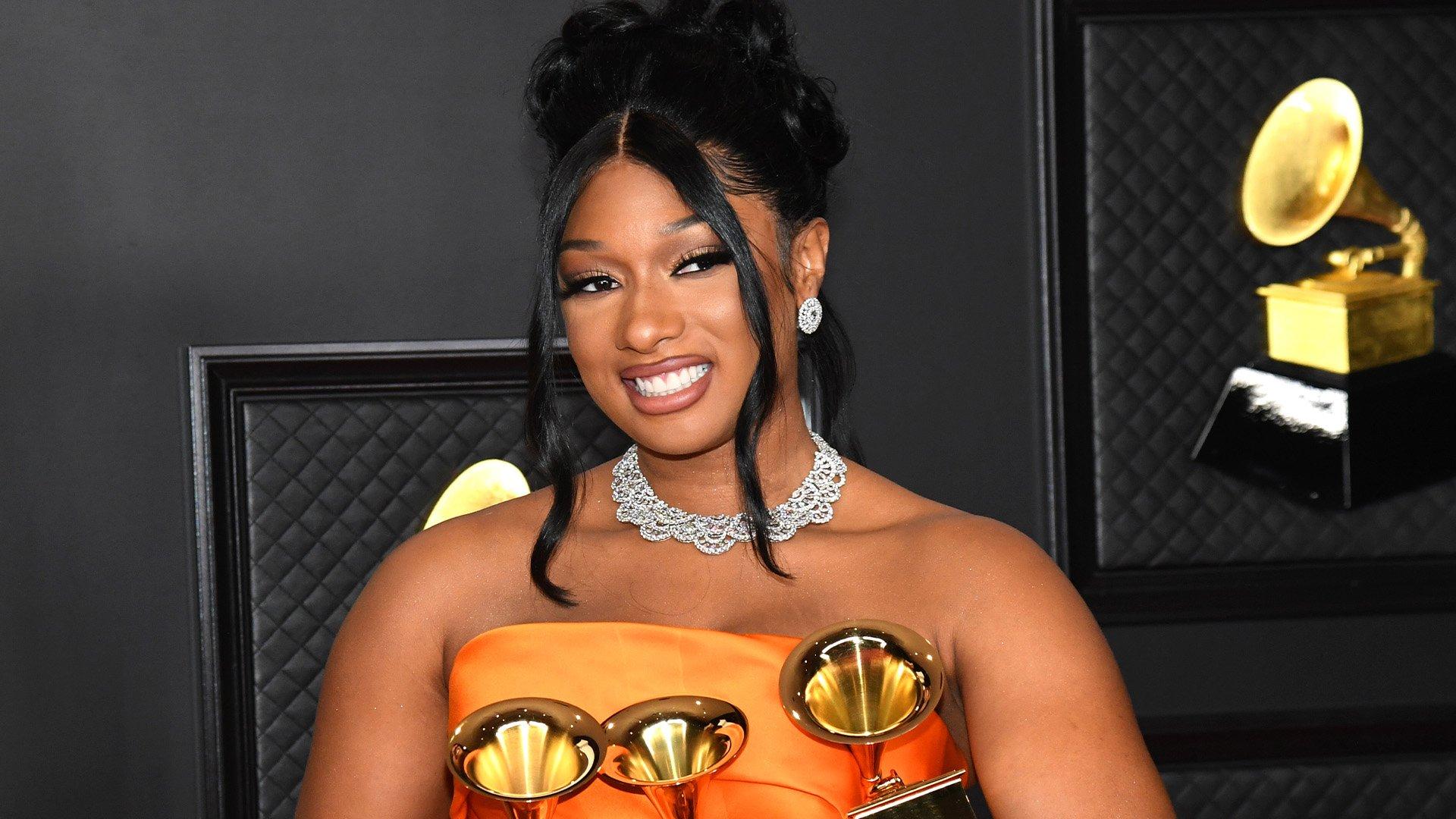
Photo: Kevin Mazur/Getty Images for The Recording Academy
video
GRAMMY Rewind: Megan Thee Stallion Went From "Savage" To Speechless After Winning Best New Artist In 2021
Relive the moment Megan Thee Stallion won the coveted Best New Artist honor at the 2021 GRAMMYs, where she took home three golden gramophones thanks in part to her chart-topping smash "Savage."
In 2020, Megan Thee Stallion solidified herself as one of rap's most promising new stars, thanks to her hit single "Savage." Not only was it her first No. 1 song on the Billboard Hot 100, but the "sassy, moody, nasty" single also helped Megan win three GRAMMYs in 2021.
In this episode of GRAMMY Rewind, revisit the sentimental moment the Houston "Hottie" accepted one of those golden gramophones, for Best New Artist.
"I don't want to cry," Megan Thee Stallion said after a speechless moment at the microphone. Before starting her praises, she gave a round of applause to her fellow nominees in the category, who she called "amazing."
Along with thanking God, she also acknowledged her manager, T. Farris, for "always being with me, being by my side"; her record label, 300 Entertainment, for "always believing in me, sticking by through my craziness"; and her mother, who "always believed I could do it."
Megan Thee Stallion's "Savage" remix with Beyoncé also helped her win Best Rap Song and Best Rap Performance that night — marking the first wins in the category by a female lead rapper.
Press play on the video above to watch Megan Thee Stallion's complete acceptance speech for Best New Artist at the 2021 GRAMMY Awards, and remember to check back to GRAMMY.com for more new episodes of GRAMMY Rewind.
Black Sounds Beautiful: How Megan Thee Stallion Turned Viral Fame Into A GRAMMY-Winning Rap Career
